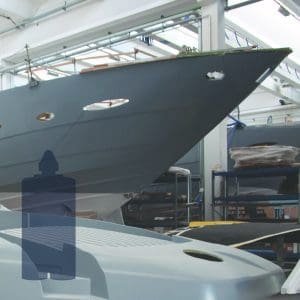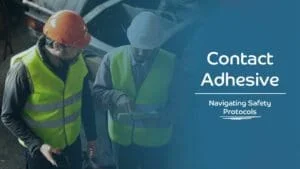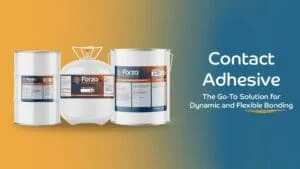Structural Adhesives for Fiberglass Manufacturing
Why are structural adhesives such a good choice for fiberglass manufacturing?
First of all, let’s explain what structural adhesives and fiberglass are.
A structural adhesive is basically an adhesive that can withstand high pressure for long periods of time, and fiberglass is a lightweight composite material with extremely high structural integrity.
Traditionally, mechanical fasteners have been used in the manufacturing of fiberglass. While fasteners have their place, structural adhesives have been found to work much better. Mechanical fasteners can cause stress around the fixing, resulting in stress cracking, added weight, rattling, vibration, and sometimes even substrate failure. Structural adhesives, on the other hand, eliminate the risk of cracking, as they provide a strong bond line that absorbs the load much better, improving the structural integrity of the finished part.
In fact, many structural adhesives are so strong, that the bond is stronger than the substrates themselves! They also act as sealants, reduce noise and vibration, and result in a smooth, nicer-looking finished surface. Not only do structural adhesives provide a strong bond, but they can also withstand extreme weather conditions. The main types of structural adhesives used in fiberglass manufacturing, are epoxies, methacrylates and urethanes.
Epoxies
Epoxy adhesives are the most commonly used of structural adhesives. They are 2-part systems consisting of a resin and a hardener, which mix in different ratios to produce a wide range of viscosities, work lives, cure schedules, clarity, and degrees of flexibility or rigidity. They provide such tough bonds, that the substrates are more likely to fail than the adhesive bond line.
Epoxies provide very high strength bonds, with a very high temperature resistance. They also have a long open time, allowing large parts to be assembled and repositioned, or many small parts to be assembled before gel. They are known for their chemical, creep, and peel resistance. Epoxies help seal gaps between panels, retain good mechanical properties in harsh environments, and resist dynamic loading in the presence of chemicals, water and humidity. Epoxy adhesives can handle a wide range of challenging applications.
Methacrylates
Methacrylate adhesives are a type of resin, that excel in bonding composites. They are more flexible than epoxies but cure a lot faster. They are very resilient adhesives, lasting a long time in service. Methacrylates need little surface pretreatment, have a high service temperature range, and provide substrates with better stain protection, adhesion and blocking. They can withstand high impact, and provide high resistance to cracking and blistering, water, and chemicals.
Urethanes
Urethanes are 2-part adhesives that are particularly well suited for bonding fiberglass. They are more flexible than epoxies, and provide strong, high impact resistant bonds. Their work lives range from slow to fast cure, and they have good peel and lap shear strength. Urethane adhesives have extremely high elongation and can resist a wide range of weather conditions. With their high resilience, urethanes are quite good for providing bonds that require flexibility for expansion, contraction, or other types of movement.
Want to learn more about optimizing your fiberglass manufacturing with structural adhesives? Contact us, we’d to work with you to optimize your processes!




